Where do Saigonians spend the weekend? Vam Sat Eco Park!
Hello Folks!
Everywhere is good, but at home it's best, that's what I would like to say after more than a month and a half of traveling around Europe and Mexico.
I finally landed in Sai Gon and what can I say... good morning Viet Nam!
The temperatures here pamper us between 26 and 33 °, sunshine, as in the dry season, in the sky from the morning, and white cumulus clouds flow overhead every now and then.
I asked you a question on Facebook. Should reports from individual trips, like my last trip to Mexico, be included on my blog? As a rule, the blog is dedicated to Asia, but I received positive comments and most of you decided that it is worth posting such travels on the blog. So I decided that I would also write a memoir from my trip to Mexico. But that's in a while.
Coming from the airport, I noticed through the window that most of the New Year's decorations had already been taken down, but a few of them remained and showed the Cat, not the Water Rabbit.
I immediately remembered that we have a difference between Viet Nam and China when it comes to celebrating this year's Lunar New Year.
It results from the fact that we have different animals that are the patron of the year 2023. While China, Singapore and Malaysia have entered the year of the Water Rabbit, Viet Nam celebrates the year of the Cat.
The lunar zodiacs in both countries are the same in terms of the number of animals and there are 12 of them.
However, they differ when it comes to the two animals. It turns out that in Viet Nam the cat is more respected than the rabbit, hence the cat as the zodiacal animal, patronizes the current year. The second animal that is different between the two lunar calendars is the Ox and Buffalo. The Ox is more valued in China and the Buffalo in Viet Nam. Therefore, the situation where the patrons in the lunar calendar will be different will happen in 2033. It's such a curiosity.
From articles on the subject of celebrating the Lunar New Year in Asia, you already know that it is mainly a family holiday and one of the largest migrations of Asians traveling between their place of residence and their home towns. It is during this time that employees use all available leave.
There are also public holidays, sometimes creating a "long weekend". It is then that I often meet Vietnamese who go on outings.
Just like in Poland, there are places around big cities where residents willingly and often organize one- or two-day trips.
We have several such places in the Sai Gon area.
As you already know from the blog, one of such places is, for example, Vung Tau, which is almost besieged by Saigonians during a long weekend or at all when they have a weekend.
Access by a decent national road or a hydrofoil trip takes about 2 hours, which is conducive to such trips. What you can and must eat in Vung Tau, what to see and how much it costs, I described in two articles that I recommend to you.
Another popular and close place that I wanted to invite you to today is the nature reserve located in the district of Can Gio. It is part of Ho Chi Minh City, and the reserve is located in a mangrove forest in the backwaters of the Dong Tranh River. Counting from the center of Saigon, it is about 50 km, which gives more or less a two-hour distance from the city.
The interesting location and good road connection make it a place that the inhabitants of Sai Gon visit very willingly. I also noticed that it is not a mecca for tourists, so it is not crowded.
Ready for adventure? Let`s go!
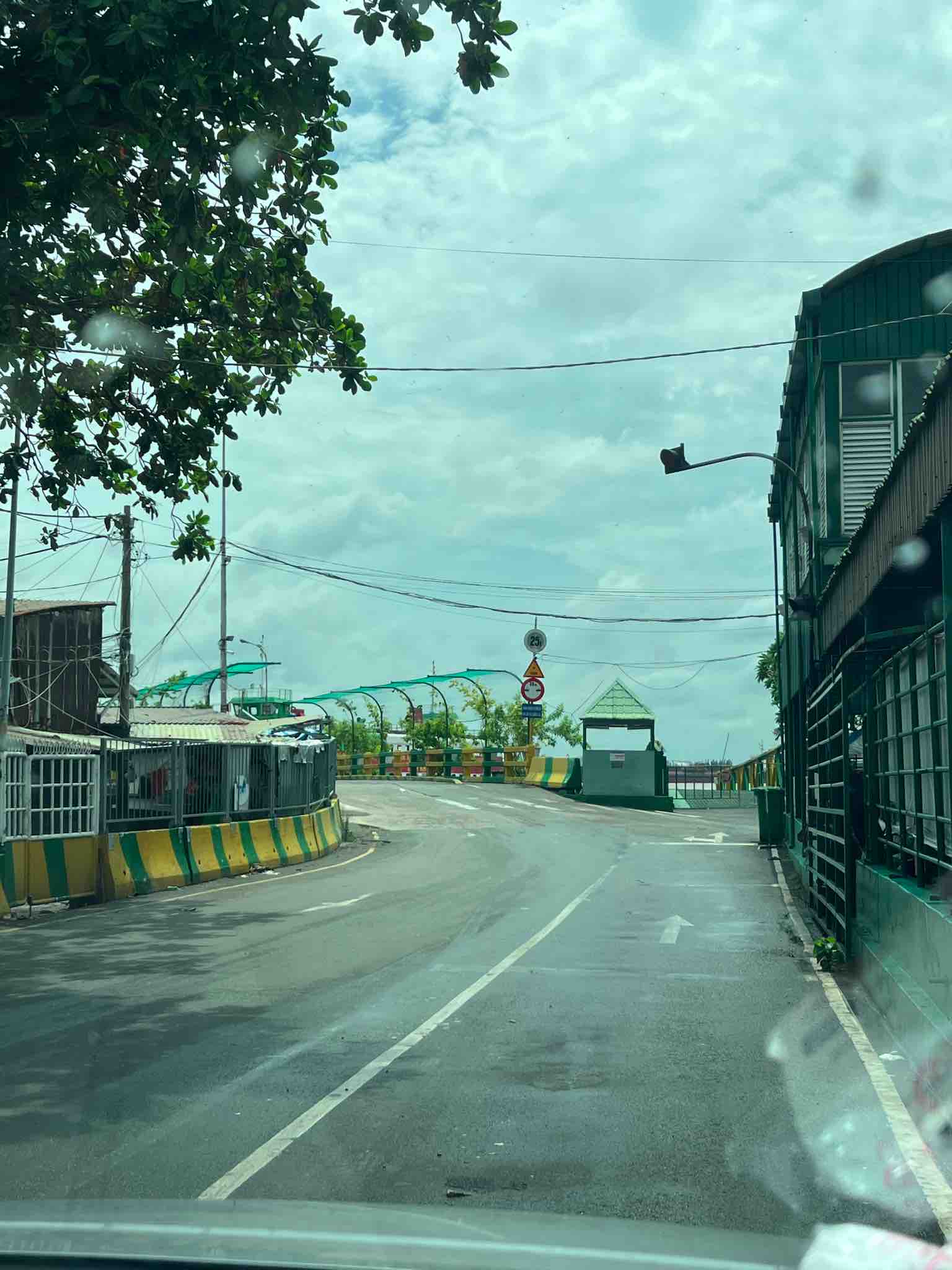
How to get to Can Gio Vam Sat Eco Park?
The entire area is located on an island that has the common name "monkey island". In fact, the population of macaques is large here and you will meet them in the reserve practically on every path.
To get to the park, first of all, drive through District 7 to the Pha Binh Khanh ferry crossing, then take the ferry to the other side of the river and then about 30 km on a good road directly to the park. By motorbike or car it will take about an hour and a half.
If you drive a motorbike, the easiest way is to go there on two wheels.
The road is straight, marked already at the ferry crossing, which is also easy to get to.
At the ferry crossing you will get the first information in the form of banners on the wall in the waiting room for motorcycles.
A ferry ticket to the other side costs 4.5 thousand VND if you are traveling alone, or 8 thousand if you are two people. You will cross the car for 35,000 with passengers.
The ferries depart every few minutes because there are three different mooring and entry points for the ferries. The whole thing is quite efficient and crossing the river takes about 12 minutes. However, things don't always go so smoothly. Rush hours and ferry breakdowns can turn a few-minute crossing into an hour-long nightmare…

Nevertheless, the ferry crossing itself is a small attraction. Firstly, a very local feel. Secondly, a lot of people coming back from work or going to work, depending on which direction the ferry is going, is an opportunity to talk, meet someone or just see how the local community lives at the marina. After all, right in front of the ferry port, but also on the way, you will find plenty of small street stalls selling iced tea, sugar cane juice or a delicious breakfast in the form of a Banh Mi baguette. Either way, it's worth starting your trip out of town early in the morning. I think nine o'clock is the perfect time to start. Therefore, around 09:45 we will be at the ferry crossing and after 30 km of driving, around eleven o'clock, we will arrive at the place.
The whole road is well marked. We cover most of the distance on a two-lane road narrowing on bridges over the river. After 20 km, you reach a crossroads, turn right and follow the main road for about 10 km. We come through small villages but, above all, through the basin of shrimp production.
It is worth stopping for a moment because on both sides of the road you will have plenty of shrimp farms. From small, simple to quite modern with working water aerating pumps, huge saltwater pools and shaded breeders, this is a world-class in the industry. The whole is often fenced and the owners' houses prove that it is a profitable business.
You also have to be careful here because the exit to the park from the road that leads between shrimp farms is quite poorly marked and can be overlooked.
There is only one plaque, and it is slightly faded. In any case, turn left as indicated by the green signs.
Just a moment of driving on a dirt, very muddy road, and we reach the gate of the Eko Park. The car park is quite large, so you can leave your motorbike or car and go to the ticket office to choose the type of ticket.
I, driving alone, used the scooter. However, when I visited Vam Sat with my family, I ordered a car for 10 hours, which is enough to spend the whole day in the eco park, including getting there and back. Renting such a car with a driver costs 2,300,000 VND. The price covers all costs including the ferry and the driver's meal. A similar offer is offered by Grab, popular in Viet Nam. Renting a car for 4 people for 10 hours with a limit of 100 km costs 1,400,000 VND. In this case, however, the tickets for the ferry and the driver's meal must be paid separately. In addition, it is difficult to find a willing driver. I will choose this option to check next time.
What is Can Gio Vam Sat Eco Park?
After getting off the ferry, you are moving through a fairly dense forest and, after stopping for a coffee, you can meet local people. That's quite a large number of people, and many of them are war veterans. I was surprised by their good command of the English language. In addition, they willingly enter stories about war.
This is interesting because the area of the "monkey island" is strongly associated with the Viet Nam War. But more on that at the end of the article.
So what, ready for attractions?
You won't be bored on a day trip to the park.
There are so many attractions there that they will allow you to spend at least 5 hours.
After arriving at the place, leaving the car or scooter in the parking lot, tickets must be purchased.
There are several options.
You can buy tickets for each attraction separately or in "Combo" packages. These, however, are intended for groups of 4-5 people. There are also seasonal options. Part of the park is closed during the bird breeding season. Since cranes, lemmings and other birds await their offspring, we do not enter the nesting areas.
I recommend buying a full package, i.e. a ticket that entitles you to all attractions, and there are several of them.
It comes out the cheapest, even if the "combo" for one person has a higher price. Besides, you already have a certain sequence set on your ticket so it will be easy to get around this park.
Ticket prices start from 50,000 per person and the most expensive package is for 380,000 VND and this package includes all the attractions.
Everything is quite accurately described in English on the board at the ticket office, so it will not be a problem to choose the right ticket for yourself. There is one small obstacle to overcome.
Cashiers speak very little English. Sometimes you have to show with your finger which tickets you choose. A ticket is a handwritten receipt. It is also worth knowing that payment at the cash desk is only in cash. You have to be prepared. The good news is that in the restaurant in the park, you will pay by card.
After buying tickets, the cashier calls a small bus and, after crossing a very nice, arched bridge over the river, you are taken by a car that takes tourists to the center of the reserve.
This center is located between all attractions, it is created by a complex of buildings and shelters. There are rooms for rent, a camping site, a party shelter and nice toilets.
The whole is complemented by a stylish restaurant, several small streams and sculptures of crocodiles.
This is the place from which the implementation of the attractions included in the ticket begins.
What can you see in Vam Sat Park?
What attractions can we expect in the park?
Probably the simplest attraction is a 26-meter observation tower, which you have to climb to be able to admire the panorama of several thousand hectares of forest and the ships passing by the river.
The whole thing is quite wobbly but there are ropes supporting the tower vertically so generally even quite heavy people have no problem getting to the top. Arched metal stairs lead to the base of the viewing platform. It is a simple structure with steps of different lengths. This is not very convenient at the beginning of the climb because the first 40 steps are so small that a foot larger than 36 does not fit all the way up. You have to put your feet sideways. Later it is better and the last steps are already a meter long.
After reaching the tower, there are 3 more floors to climb. But the view from the tower is worth the effort. The forest stretching to the horizon, majestically sailing ships and the wind cooling sweaty faces are the reward for the hardships of climbing to the top of the tower.
Anyway, judge for yourself.
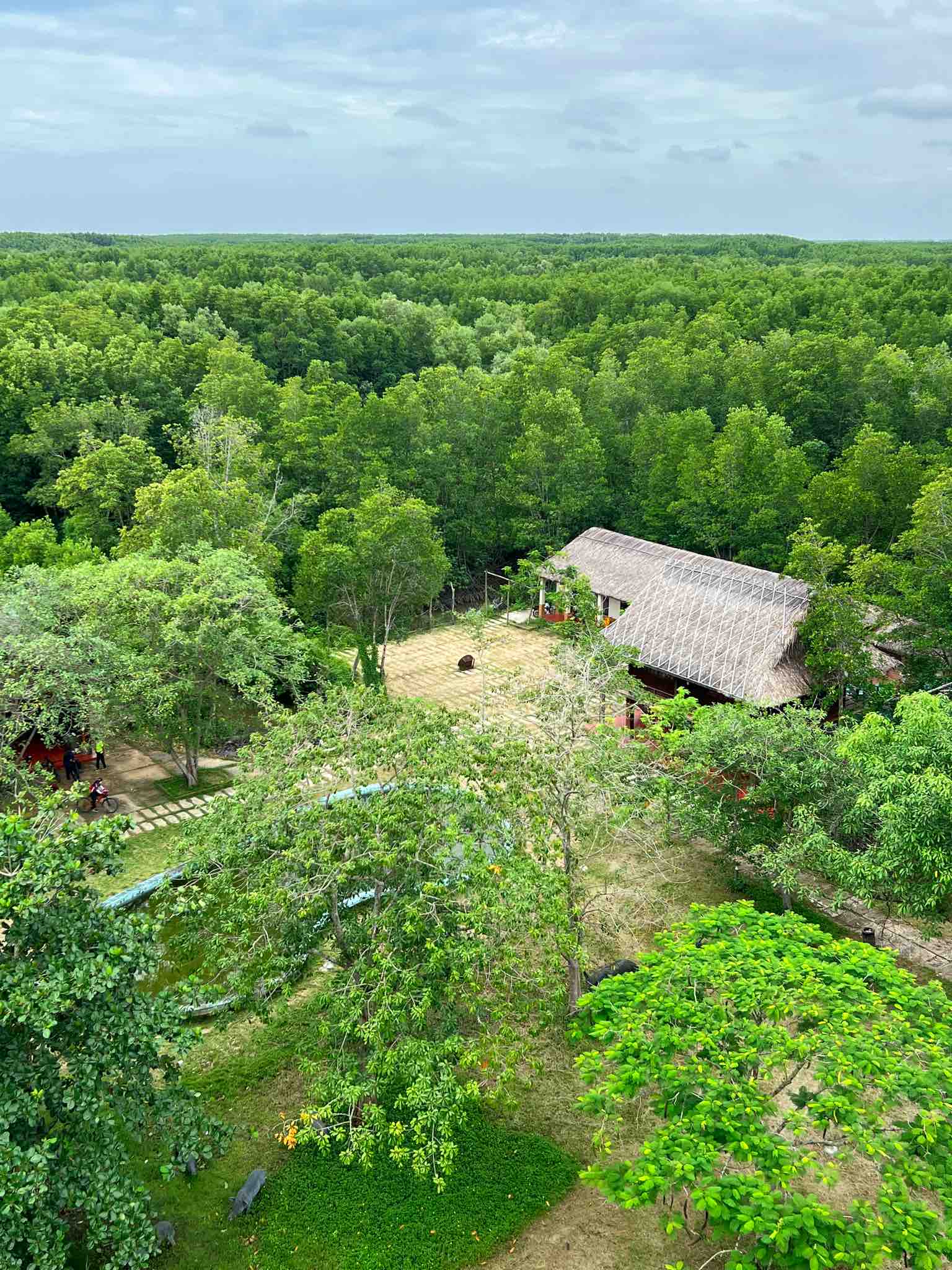
The second attraction can be a walk through the mangrove forest. To get to the forest, you need to cross the lake and then go either over a bridge hanging on ropes or just a fixed bridge, prepared for less experienced tourists and there, between the trees, take a walk on a marked concrete path. The views are amazing.
A bit like horror movies.
Gray, thin tree trunks, crowned with leafy branches, rest on many legs of supporting roots. All this grows out of the gray, muddy ground. Walking through the forest, you can hear the sounds of gases coming out of the mud and see gilly fish-jumpers and snails. The sound is like opening a wine bottle. The whole thing feels a bit eerie.
Even more spooky on a cloudy day…
I was personally amazed by the stiffness and hardness of the trees. It's hard to tell their age. The trunks are not too thick, but they are extremely stiff and very hard. If you pull a young birch or pine tree in Europe, it will bend, bend, you can shake it. In the case of mangrove trees, even thin ones, none of these things. It stands still and does not move. To be honest, I can't imagine, for example, that a car could enter there. No chance even for military personnel carriers. It's like a natural barrier. Not to beat. And swampy ground.
It is really worth taking this walk because you will not see such a forest in Europe. It will take you 40 minutes. How do you feel looking at the photos below?
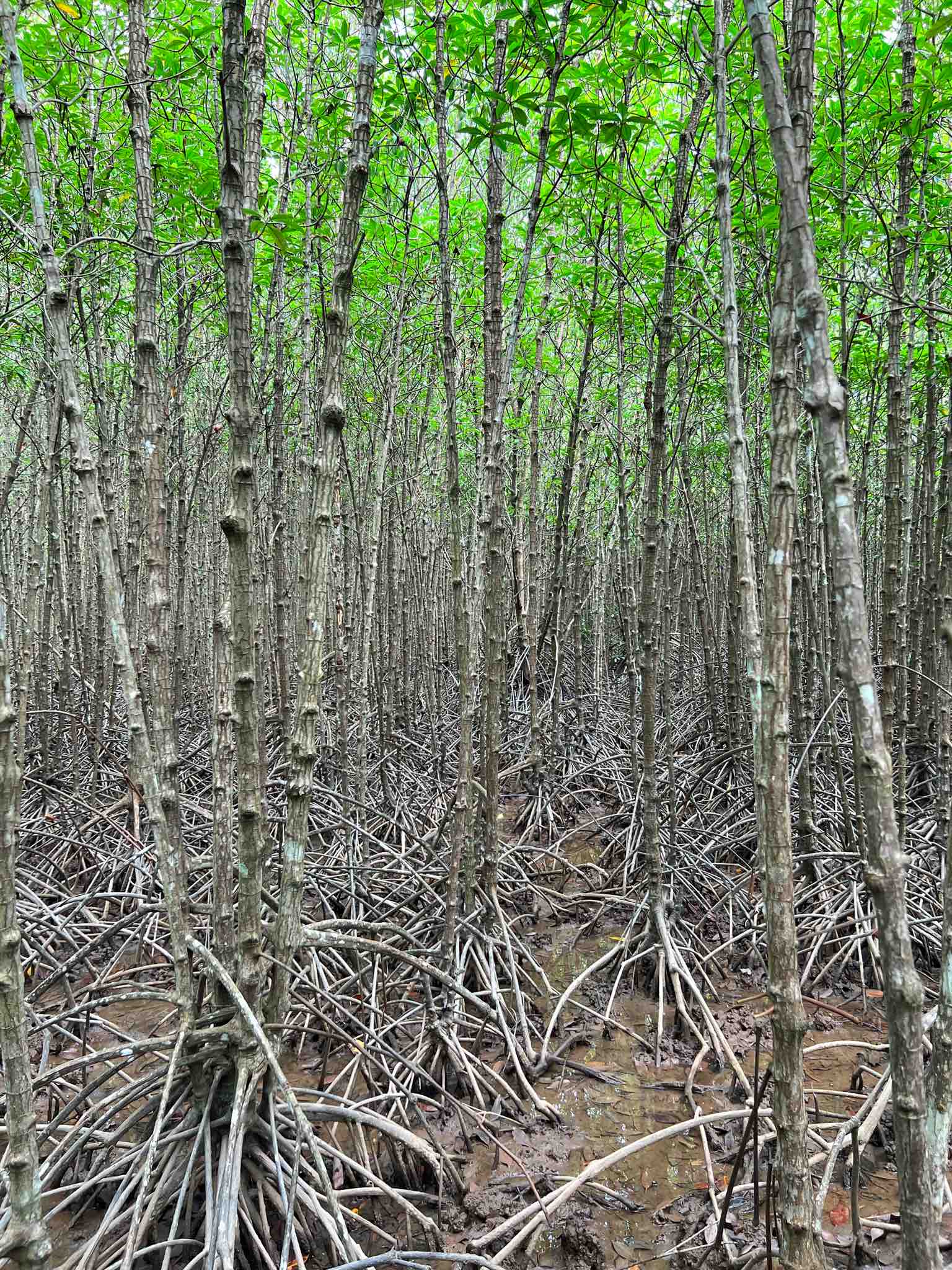
Give me a crocodile, if you don't want my destruction…
This is one of the two most attractive offers in the ticket price.
You will be picked up by a small bus, the same one you were taken from the entrance to the park, to the lagoon where more than 40 crocodiles live. You can also get there by walking through the forest for about a kilometer. It will be an opportunity to meet many monkey families along the way. After all, we are on "monkey island", right?
Before we get to the water, we pass cages for young crocodiles and a nesting cage, which usually has some eggs waiting for the tiny crocodiles to hatch. You will be accompanied by macaques, closely watching your every step. Be careful, however, because they are little rascals and can break the chain from their necks or steal glasses at any time. They are not as dangerous as those in Bali, at the Uluwatu temple, but they are still wild animals.
And the crocodiles?
They are waiting for us, swimming dignified in the murky water, sticking only their eyes and partially their back above the water.
They look quite innocent, swimming peacefully or basking in the sun in the shallows.
But the highlight of this place is... feeding these beasts.

You will be invited to a metal raft, which is actually a cage, made of suitable steel. The whole is, of course, meshed to the level of more or less the chest.
You can feel safe.
On average, six people enter such a raft and then the operator sails away from the marina for a few meters and ... you are already directly surrounded by crocodiles, which calmly follow the raft's movement.
I think after all these years, they know what's going to happen. They are just waiting for you to put a wooden stick with a fishing line, at the end of which there is a piece of fish, behind the mesh cover. And the fun begins.
You will feed the crocodiles!
It is worth experiencing the emotions that accompany this game. We tempt crocodiles with meat hanging on a stick and a line. And they look, dodge, get ready, and suddenly, without any sign, they throw very quickly and nimbly at the hanging piece of meat. A fraction of a second and you feel a strong tug on the stick.
There is no trace of the fish and you heard only a powerful "clapping" of the jaws.
It makes a colossal impression because it seems that these animals are quite slow. The massive body, which seems to be only a shell, moves very slowly. But these are only appearances. Floating so that their jaws are always ready to clamp down on their prey, they grab meat suspended from a fishing line in the blink of an eye. Every time, even though I know the rules of this game, I get a little thrill.
I highly recommend this attraction.
In the land of gentleness, it's time for bats...
This is the second and best, in my opinion, attraction in the park.
There are several reasons for this assessment.
First of all, to get to the habitat of swamp bats, i.e. to their sanctuary, you need to travel quite a long distance in a motor boat. So there is an opportunity for a ride on the river.
The motor boat will take you through the river branches to the place where we change to small rowing boats. Each of them can accommodate up to six people.
Local residents, familiar with the backwaters, will sail with us through small canals and a shallow lake to the swamp bat sanctuary.
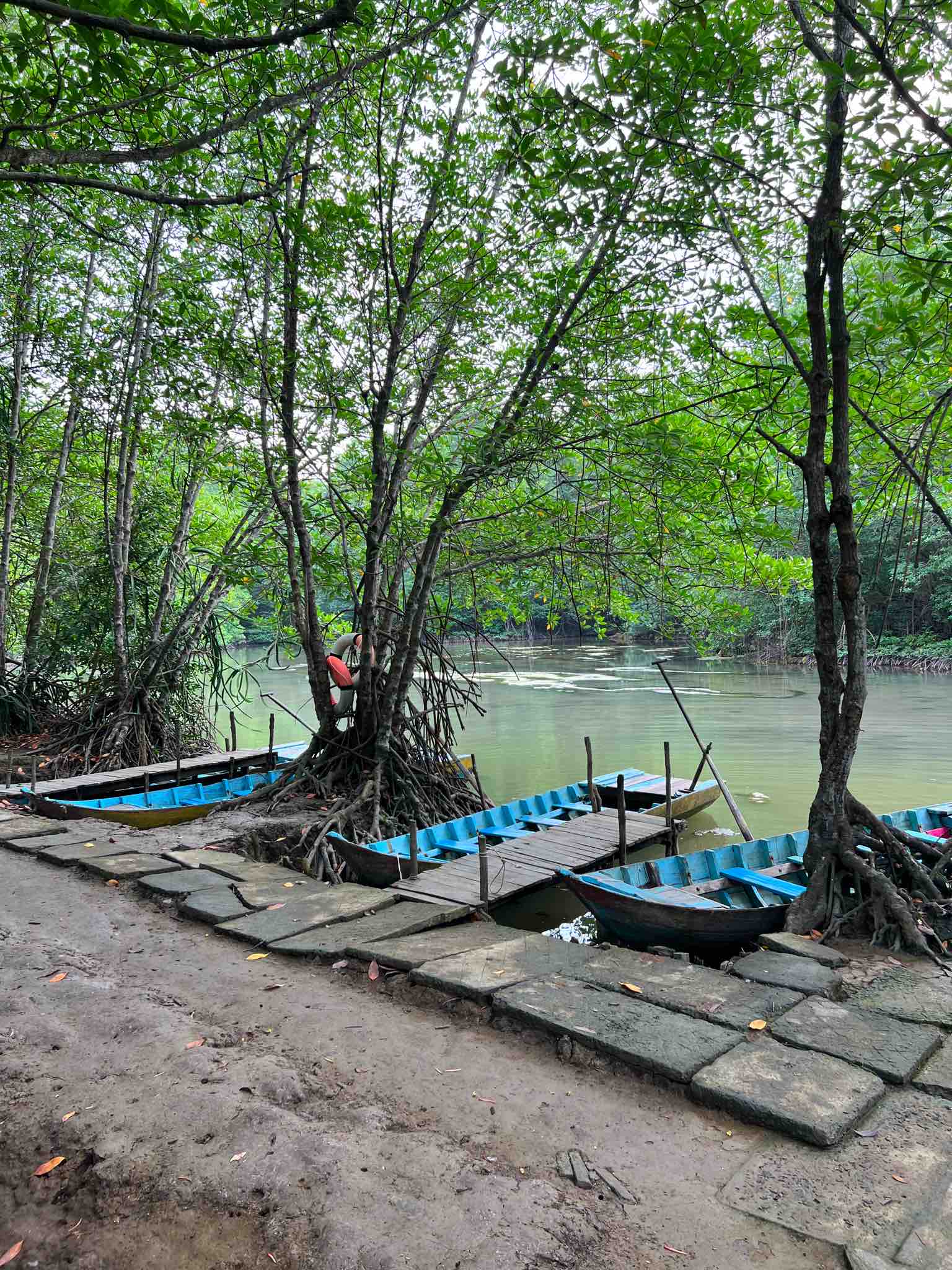
The ride leads through a narrow isthmus between the marina and the mangrove forest, which is another opportunity to see the natural habitat of these trees.
Further, through a small lake where you can often see cranes or herons that wade in the shallow water of the lake in search of fish. It is extremely quiet here, there is no cell phone coverage. Around you can only hear the singing of birds and the "cries" of bats. These can make quite a noise.
Sailing through the shaded isthmuses, in the coastal zone of backwaters, we reach the place where we will stop for a moment. Crouching on a wooden boat, in silence, we will see powerful bats living not in caves but in tree branches. They hang on the trees looking like dried huge plums. Every once in a while they make noises that sound like hyenas barking to me.
It happens that we witness fights between bats, especially in February, when there is a reproductive period.

Plus, the silence is stunning. Every movement of leaves, every splash of fish or flutter of birds' wings can be heard very clearly. We spend a few minutes here to see how swamp bats are trying to arrange their lives.
Then we return to the marina, covering several hundred meters through the canals and again a large pool.
We change to our speedboat and glide along the river at high speed to the main place in the eco park.
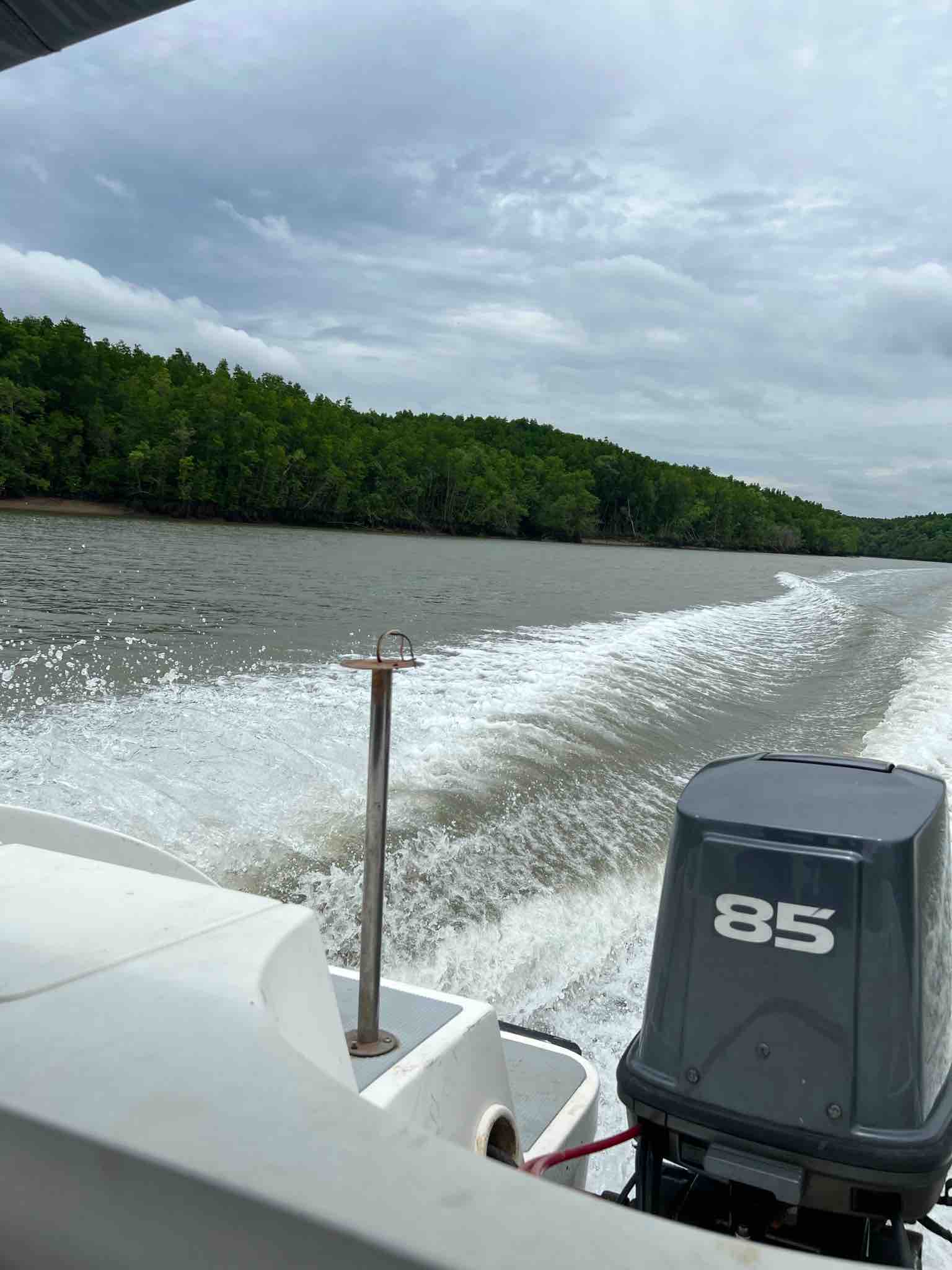
If you're hungry, you've come to the right place...
This is a kind of tourist center of the park. We have a large restaurant where you can pay by card and small bridges to access it.
If you feel like having lunch, you can just stay here for a bit longer and order food from the a la carte. Prices are affordable. I recommend the specialty of the kitchen, shrimp hot pot. For 300,000, there are so many different ingredients in it that it's enough for 4 people. There is also beer. A full selection of local dishes is on offer. Fried spring rolls, fish, salads and seafood. Everything is prepared by local cooks. It is tasty, healthy and most importantly, unique in taste. You can choose from basically everything that Vietnamese cuisine has to offer.
When you have completed all the attractions, you can come back here for a while, sit and drink fresh coconut milk or take another walk in the mangrove forest.
At any time you can request a transfer to the entrance gate and you will be taken in a small open-top minibus to the main gate. From here you will cross the arch bridge to the parking lot and from there you will return to Sai Gon.
Before we leave the park, a bit of history.
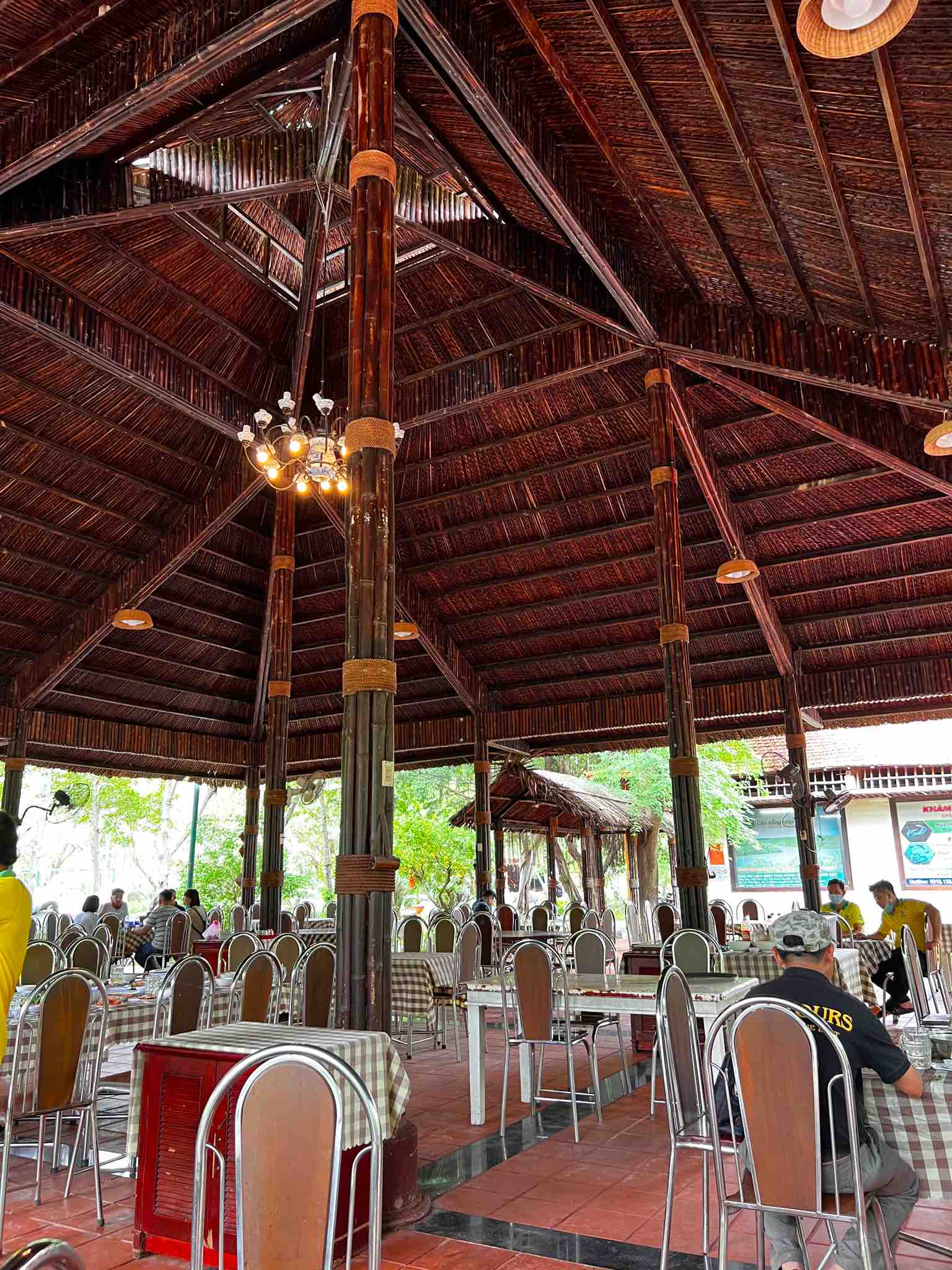
What is the history of Can Gio Eco Park?
First of all, the park is still within Sai Gon and is a biosphere reserve, which was recognized by UNESCO as the first reserve of this type in Viet Nam.
Before the war, well over 80 years ago, it was an untouched mangrove forest, rich in countless species of plants and animals.
Unfortunately, the war did a terrible thing to this place. I don't know if you remember, but during the war, the Americans used defoliants, which were called "orange agent" because of their color. They and the bombings turned the whole area into a wasteland.
Defoliants destroyed the green parts of all plants and the forest was completely destroyed.
Vegetation has ceased, all the forest has simply died out, and the bombardment has destroyed the natural waterways and canals that abound throughout the Mekong Delta.
The war has turned this place into a completely devastated, empty area, with no living organisms.
Restoring this part of the delta to the state in which we see it today took over 30 years, and the beginnings of building this place so that it was accessible to residents, and later for tourists, began in 1979.
Today, Can Gio is the largest mangrove forest in Viet Nam with an ever-growing population of animals and plants. Importantly, not only the number of individuals increases, but also the number of species. As a result, biodiversity in this area increases.
Can Gio currently covers 31,000 hectares of dense mangrove forest and hundreds of small canals and rivers.
Out of these 31 thousand 20, these are forests planted after the war, while 11,000 ha are old stands on the outskirts, which were saved because they survived the war.
Such a large area and close proximity to Sai Gon made the inhabitants of the metropolis call this area the lungs of Sai Gon.
The Vam Sat Eco Park complex itself was created as an agritourism farm with space for camping and weekend trips. You can book a room or pitch a tent there.
You can also learn about the history and nature of the place through individual workshops and tours that can be booked in advance.
I think it is worth emphasizing that the park was created with the cooperation of scouting teams that started their activities in 1979.
They mainly consisted in afforestation of these post-war areas, devoid of vegetation.
After about 20 years of work, the tree stand was so systematized that the place began to resemble a natural mangrove forest.
After the works were completed, the government handed over the entire operation to a tourist company.
Either way, it was the volunteers and scout teams who were practically the ones who rebuilt the place to what we see today.
That`s the story...
Is it worth seeing Can Gio Vam Sat Eco Park?
Personally, I really like this place. I've been to the park three times already, and I will definitely come back.
The atmosphere of the mangrove forest, silence, quite a lot of young people, scout teams at the campsite and good food in the restaurant are a solid magnet that attracts visitors.
A trip to Can Gio is an opportunity to rest from the everyday hustle and bustle, dust and horns of Sai Gon.
A walk through the mangrove forest, climbing the observation tower, from which the view really stretches to the horizon, is a prelude. A visit to the crocodiles and a trip to the marsh bat sanctuary are the culmination of your stay.
By the way, if you have enough time, and I think you can plan your trip in such a way that it is enough, it is worth asking the driver to stop at one of the shrimp companies.
It is worth seeing how shrimps are bred. Since the drivers usually speak some English and speak Vietnamese at the same time, you can ask them for help with translation. Local breeders will be happy to show you the effects of their work.
That's it for today from Viet Nam Folks. Tired, tanned by the sun and whipped by the wind, we return satisfied to Sai Gon, where the prose of urban life awaits us...
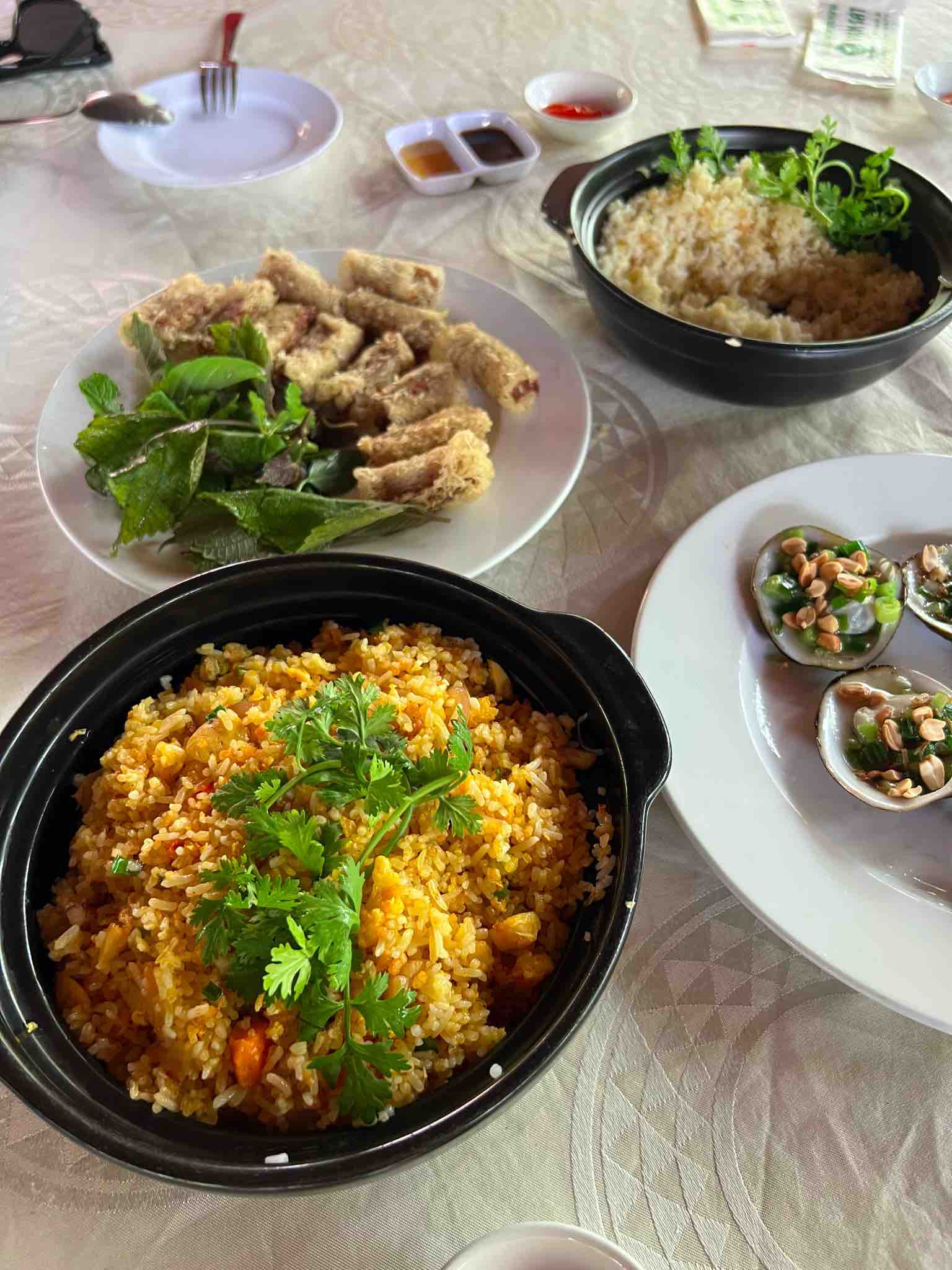
Thank you all for subscribing to the newsletter, for liking the page on Facebook and Instagram.
If you liked the content you read on the blog, I encourage you to share it in your Facebook groups.
In a week the moon is full, and when it is full, every wish comes true.
Until then, watch the conjunction of Jupiter, Venus, Neptune and the moon. It is a rare and beautiful phenomenon in the sky.
Arek from the 9 Dragons Delta.
More articles


Pages created with WebWave






















